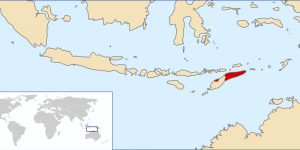Visit of the “Economic and Development Affairs Committee” of the National Parliament of Timor Leste (East Timor) to Goa
“Tourism, Economy and Culture – the experience of Goa”
20 – 26 July 2014
After being contacted by the Economic and Development Affairs Committee of the National Parliament of Timor Leste (East Timor) to help them organizing a visit of Timorese Members of Parliament to Goa, the Lusophone Society of Goa (LSG) is happy to inform the visit is due to take place organized with the support of LSG.
The visit, 20 – 26 July 2014, seeks to exchange information and explore opportunities of cooperation between East Timor and Goa/India especially in the area of Tourism and related sectors. The visit pretends also to be a milestone in the History of the relationships between East Timor and Goa /India reestablishing the old close relationships.
Business contacts in any other area are also welcome. If you are interested in doing business with East Timor contacting the delegation please send an email, not later than July 15, to info@sh118.global.temp.domains
Facts about East Timor (Timor-Leste)
- East Timor or Timor-Leste, officially the Democratic Republic of Timor-Leste, is a country in Southeast Asia. It comprises the eastern half of the island of Timor, the nearby islands of Atauro and Jaco, and Oecusse, an exclave on the northwestern side of the island, within Indonesian West Timor.
- The country’s size is about 15,410 km2 (5,400 sq mi). The population of East Timor is about 1,143,667. The population is especially concentrated in the area around Dili, the capital.
- East Timor’s two official languages are Tetum and Portuguese. East Timor is a member of the Community of Portuguese Language Countries (CPLP – also known as the LusophoneCommonwealth).
- East Timor is one of only two predominantly Roman Catholic countries in Asia, the other being the Philippines. According to the 2010 census, 96.9% of the population profess Catholicism.
- The culture of East Timor reflects numerous influences, including Portuguese, Roman Catholic and Indonesian, on Timor’s indigenous Austronesian and Melanesian cultures.
- Architecturally, Portuguese-style buildings can be found, along with the traditional totem houses of the eastern region.
- East Timor was colonised by Portugal in the 16th century, since 1512, and was known as Portuguese Timor until Portugal’s decolonisation of the country. In November 28, 1975 East Timor declared its independence but soon later on December 7, 1975 was invaded and occupied by Indonesia and in 1976 was declared Indonesia’s 27th province and called “Timor Timur”. In 1999, following the United Nations-sponsored act of self-determination (referendum on August 30,1999), Indonesia relinquished control of the territory, and East Timor became the first new sovereign state of the 21st century on May 20, 2002. After independence, East Timor became a member of the United Nations.
- East Timor has a lower-middle-income economy. About 37.4% of the country’s population lives below the international poverty line – which means living on less than U.S. $1.25 per day– and about 50% of the population is illiterate. It continues to suffer the aftereffects of a decades-long struggle for independence against Indonesian occupation, which severely damaged the country’s infrastructure and killed at least a hundred thousand people.
- The unicameral East Timorese parliament is the National Parliament or Parlamento Nacional, whose members are elected by popular vote to a five-year term.
- East Timor has a market economy that used to depend upon exports of a few commodities such as coffee, marble, oil, and sandalwood. East Timor’s economy grew by about 10% in 2011 and at a similar rate in 2012.
- Timor now has revenue from offshore oil and gas reserves. The Timor-Leste Petroleum Fund was established in 2005, and by 2013 it had reached a worth of $13.6 billion. The inflows into the fund mainly stem from the Bayu-Undan oil field that lies in the Timor Sea, 500 kilometers offshore of Darwin, Australia, and 250 kilometers south of East Timor (see map). The field is operated by a consortium led by ConocoPhillips.
- The Petroleum Fund pays for nearly all of the government’s annual budget, which has increased from $70 million in 2004 to $1.3 billion in 2011, with a $1.6 billion proposal for 2013. After petroleum, the second largest export is coffee, which generates about $10 million a year.
- The agriculture sector employs 80% of the active population.
- The cuisine of East Timor consists of regional popular foods such as pork, fish, basil, tamarind, vegetables, corn, rice, root vegetables, and tropical fruit. East Timorese cuisine has influences from Southeast Asian foods and from Portuguese dishes. Flavours and ingredients from other former Portuguese colonies can be found due to the century-old Portuguese presence on the island.
- East Timor competed in the first Lusophony Games and, in October 2008, the country earned its first international points in a FIFA soccer match with a 2–2 draw against Cambodia.










